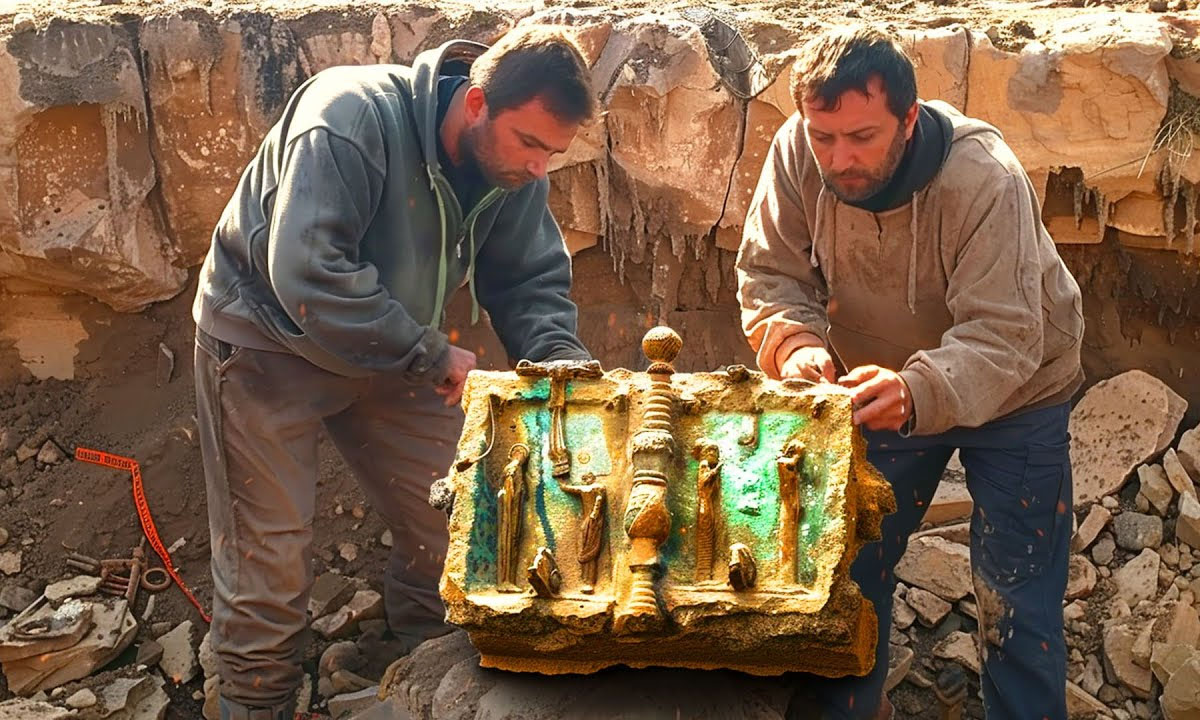
Photo Credit: Reuters
Recent discoveries of ancient artifacts in North America are challenging long-held beliefs about the timeline and nature of human habitation on
the continent. These findings, unearthed at various archaeological sites, suggest that humans may have been present in North America far
earlier than previously thought, potentially rewriting the history of human migration and settlement.
Archaeologists have unearthed a trove of artifacts, including stone tools, bone fragments, and remnants of ancient structures, that indicate human activity in North America dating back much further than the conventional timeline of human arrival around 13,000 years ago. Some of these artifacts suggest human presence as far back as 20,000 to 30,000 years ago, with a few sites even pushing the dates to 40,000 years ago or more.
Stone Tools in Texas: Excavations at the Gault Site in Texas have revealed stone tools that are believed to be up to 20,000 years old. These tools exhibit sophisticated craftsmanship, indicating that early inhabitants possessed advanced tool-making skills.
Butchered Animal Bones in California: In California, scientists discovered butchered animal bones alongside stone tools at the Cerutti Mastodon site, which has been dated to approximately 130,000 years ago. While this finding is highly controversial, it suggests the possibility of human activity much earlier than previously accepted.
Ancient Footprints in New Mexico: At White Sands National Park, researchers uncovered fossilized human footprints that are believed to be around 23,000 years old. These footprints provide direct evidence of human presence during the last Ice Age.
These discoveries have significant implications for our understanding of human migration into North America. The conventional theory, known asthe Clovis First model, posits that the first humans arrived in North America via a land bridge called Beringia, which connected Siberia to Alaska around 13,000 years ago. From there, they spread southward, eventually populating the entire continent.
However, the new evidence suggests that humans may have arrived much earlier and possibly via different routes. Several alternative theories are gaining traction:
Coastal Migration: Some researchers propose that early humans traveled along the Pacific coast, using boats or following a coastal route, whichwould have provided rich marine resources and a relatively ice-free path.
Multiple Waves of Migration: There is growing support for the idea that multiple waves of migration occurred over tens of thousands of years, with different groups arriving at various times and using different routes.
The potential for these artifacts to rewrite human history in North America is profound. If verified, these findings would challenge the Clovis First model and necessitate a reevaluation of the timeline and nature of early human settlement on the continent. Such a revision would also prompt new questions about the interactions between early human populations and the megafauna they encountered, as well as the adaptations and technologies that enabled their survival in diverse and
changing environments.
The reinterpretation of human history based on these findings is not without controversy. Some scholars remain skeptical of the dating methods and interpretations of the evidence, arguing that natural processes could explain the findings without invoking early human presence. Rigorous peer review, additional excavations, and advanced dating techniques are essential to validate these claims.
Future research will focus on several key areas: Further Excavations: Continued excavations at existing and new sites are crucial to uncover more evidence and build a comprehensive picture of early human activity in North America.
Advanced Dating Techniques: Utilizing the latest in radiocarbon dating, luminescence dating, and other methods will help refine the timelines of these discoveries and confirm their authenticity.
Interdisciplinary Approaches: Combining insights from archaeology, genetics, paleoecology, and other fields will provide a more holistic understanding of early human migration and adaptation.
The discovery of ancient artifacts in North America holds the potential to significantly alter our understanding of human history on the continent. As research progresses, these findings may lead to a new narrative of early human presence, migration, and survival in North America, enriching our knowledge of the past and highlighting the complexity and resilience of early human societies.

















